Welcome to My Blog!
这里记录着我的java后端学习之路-
(MK)Spring Security开发REST服务
主模块(pom)
pom
<project xmlns="http://maven.apache.org/POM/4.0.0" xmlns:xsi="http://www.w3.org/2001/XMLSchema-instance" xsi:schemaLocation="http://maven.apache.org/POM/4.0.0 http://maven.apache.org/xsd/maven-4.0.0.xsd"> <modelVersion>4.0.0</modelVersion> <groupId>com.imooc.security</groupId> <artifactId>imooc-security</artifactId> <version>1.0.0-SNAPSHOT</version> <packaging>pom</packaging> <properties> <imooc.security.version>1.0.0-SNAPSHOT</imooc.security.version> </properties> <dependencyManagement> <dependencies> <dependency> <groupId>io.spring.platform</groupId> <artifactId>platform-bom</artifactId> <version>Brussels-SR4</version> <type>pom</type> <scope>import</scope> </dependency> <dependency> <groupId>org.springframework.cloud</groupId> <artifactId>spring-cloud-dependencies</artifactId> <version>Dalston.SR2</version> <type>pom</type> <scope>import</scope> </dependency> </dependencies> </dependencyManagement> <build> <plugins> <plugin> <groupId>org.apache.maven.plugins</groupId> <artifactId>maven-compiler-plugin</artifactId> <version>2.3.2</version> <configuration> <source>1.8</source> <target>1.8</target> <encoding>UTF-8</encoding> </configuration> </plugin> </plugins> </build> <modules> <module>../imooc-security-app</module> <module>../imooc-security-browser</module> <module>../imooc-security-core</module> <module>../imooc-security-demo</module> </modules> </project>
-
MK电商项目
数据库设计
用户表
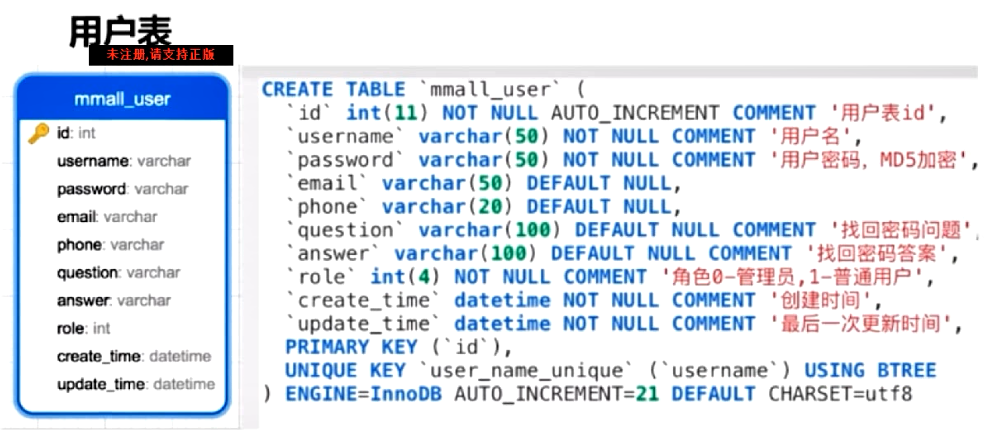
分类表
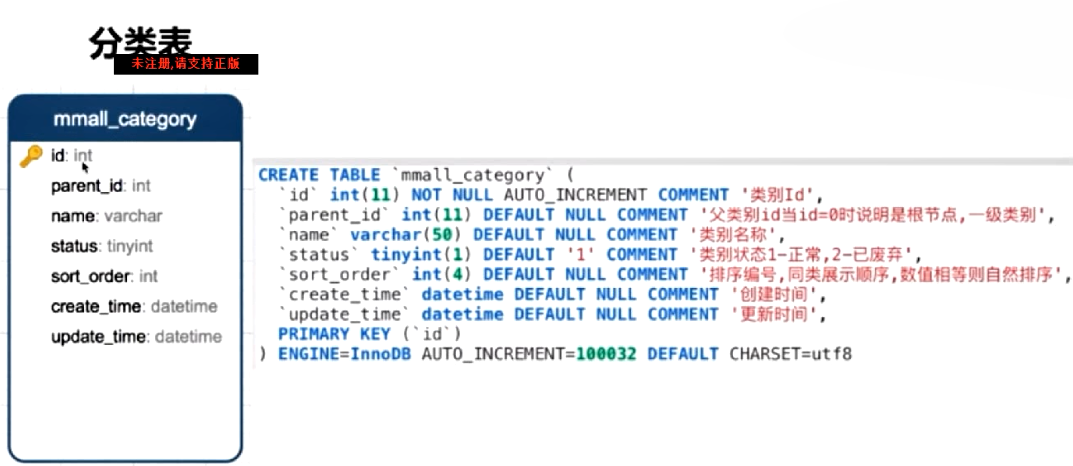
产品表
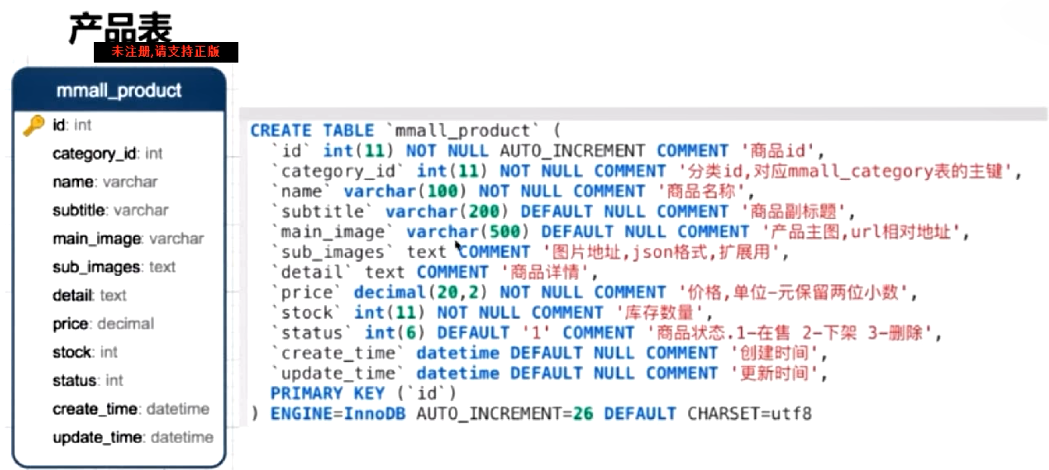
购物车表

支付信息表
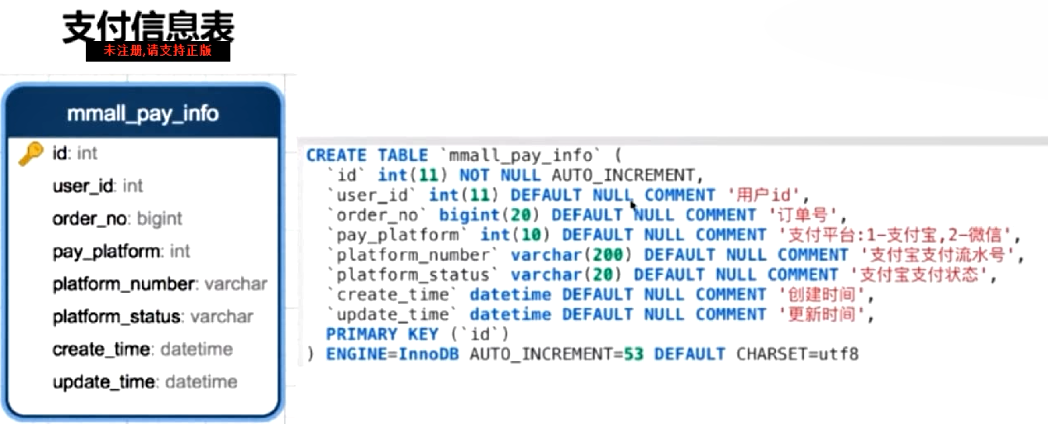
订单明细表
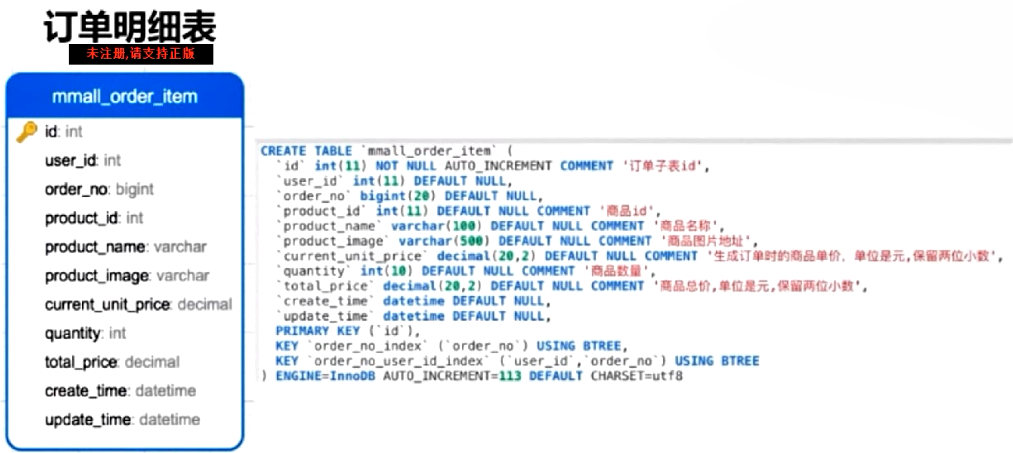
收货地址表
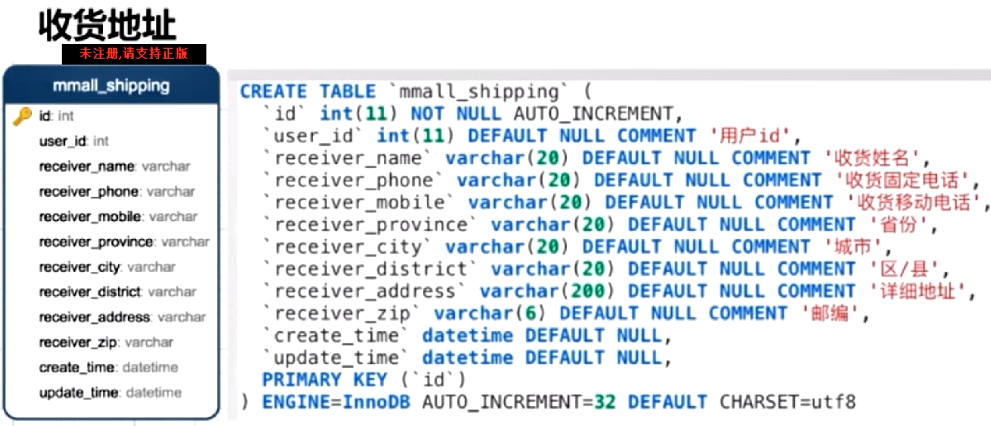
项目和Git初始化
项目初始化
- 使用idea创建一个maven项目,基于模板webapp
- 使用Git命令创建README.md说明文件
- 使用Git命令创建.gitignore文件,用来忽略上传的文件类型
# 所有的编译完的class文件不提交 *.class #package file:所有的jar包,war包,ear等不提交 *.jar *.war *.ear #kdiff3 ignore *.orig #maven ignore target/ #eclipse ignore .settings/ .project .classpatch #idea ignore .idea/ /idea/ *.ipr *.iml *.iws # temp file *.log *.cache *.diff *.patch *.tmp # system ignore .DS_Store Thumbs.dbGit初始化
- 登录Git官网,登录账号,创建一个项目仓库
- git init 初始化Git项目
- git status 查看当前状态
- git add . 把项目添加到本地仓库
- git commit -am “first init” 把项目提交到本地仓库
- git remote add origin 项目地址 把本地仓库提交到远程仓库
- git branch 查看本地当前分支
- git pull 拉取远程仓库到本地
- git push -u -f origin master 提交本地仓库到远程master分支,并强制覆盖
- git branch -r 查看远程仓库当前分支
- git checkout -b v1.0 origin/master 在本地基于master分支创建一个v1.0的新分支
- git push origin HEAD -u 把本地的v1.0分支提交到远程仓库
-
git(Git常用命令)
拉取Git项目
- git clone 链接
提交本地项目
- 1)git add .
- 2) git commit -m “mark”
- 3) git push 分支名(git push origin)
Recent Posts
Categories
- 易经 4
- 中医 1
- java基础 11
- HTML与CSS 2
- JDBC+servlet+jsp+MVC 4
- Tomcat 1
- HTTP协议 1
- 过滤器和监听器 1
- maven 2
- 测试 1
- 日志 1
- mysql 11
- Linux 9
- 八股文 3
- 算法 2
- 工具类 7
- RBAC 1
- LeetCode 1
- springBoot 5
- 设计模式 2
- spring 14
- springMVC 4
- hibernate 5
- mybatis 7
- mybatisPlus 3
- struts2 7
- git 2
- 电商项目 1
- springsecurity 1
- java8 3
- 并发 4
- 注解 1
- 数据库 1
- 鉴权 5
- Quartz 2
- elasticSearch 2
- 定时任务 1
- redis 6
- 网络编程 2
- Nginx 1
- MQ 3
- zookeeper 2
- 微服务 3
- 代码优化 6
- 事务 1
- MongoDB 2
- golang基础 4
- springcloud 4
- docker 1
- Python 2
- ai 1
Tags